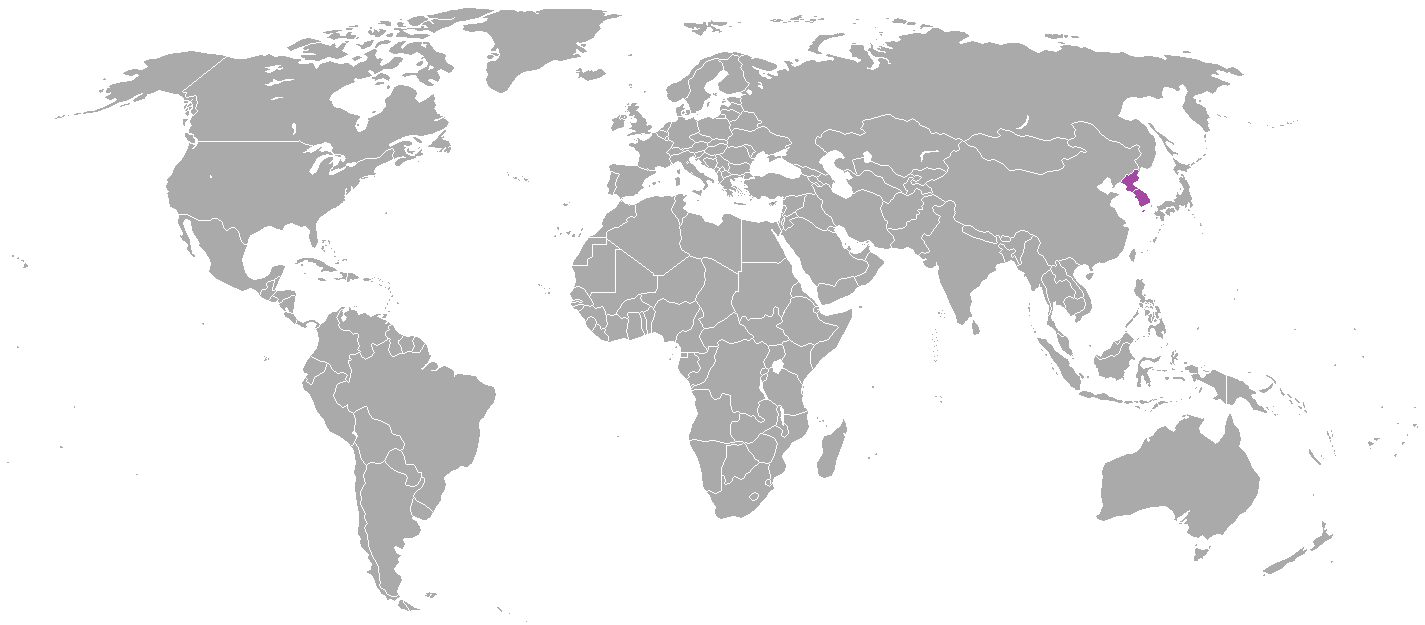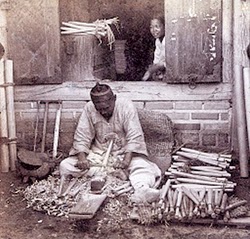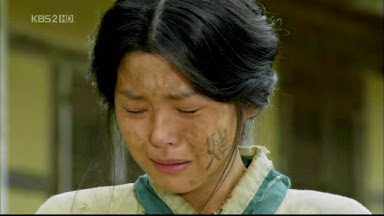There was a definite social structure in
Korea during the Joseon Dynasty with the king, on top and cheomin (low born/despised
people) at the bottom, with a patriarchal attitude throughout society. There
were a few who chose not to let society dictate how they lived however.
Traditionally, a person could Increase
their rank in society through education, but not by becoming wealthy or serving
in the military
Joseon Society was divided into 5 basic
levels: cheomin, sangmin, chungin, yangban, and the king and royal family.
Sangmin and chungin could raise their social status through education.
(Fredericks, 2014)
At the top of society was the king who had
ultimate say in matters, followed by the other members of the royal family.
(The Yi family) All were expected to follow the rules of court extricate at all
times.
The
late Joseon Royal Family (or at least part of it) (Rddadger, 2009)
The next level down was occupied by the
yangban, (aristocrats) who worked mainly as civil officials, military
officials, scholars, and other high level positions. The members this
prestigious group were usually wealthy, and wielded quite a bit of power, even
at at the beginning of the dynasty, which only multiplied in Joseon’s later
years until they would eventually rival the king in terms of influence and would
act in a similar way to how the feudal lords of Europe and Japan had operated.
(They could be oppressive to the lower classes) They were educated landowners,
who had completed an examination to gain their rank, (also giving their family
status as yangban, all the way to seventh cousins) (which was semi-hierarchal
once achieved. (Lasted 3 generations without another member of the family
passing an examination) exempting them from military service, and allowing them
to collect taxes from their tenants, (both for themselves, and for the
government) but were not subject to taxation themselves.
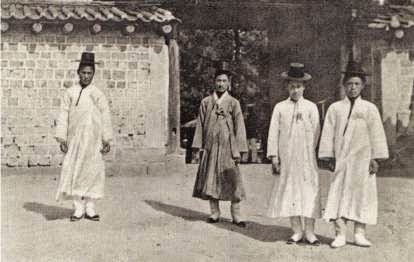
Male
Yangban in their distinctive robes with horsehair hat (KoreanHistory.info,
n.d.)
The next level down was occupied by the chungin
(middle people) who worked as: accountants, administrators, artists,
astronomers, calligraphers, doctors, de facto rulers in their local area,
interpreters, jurists, local magistrates, professional military officers,
translators and other occupations. This group also included the illegitimate
children of yangban and concubines, and could sometimes be oppressive to the
lower classes, and they were essentially yangban who had not completed the
examinations necessary to gain the title and status of yangban. They were
exempted from military service and taxes.
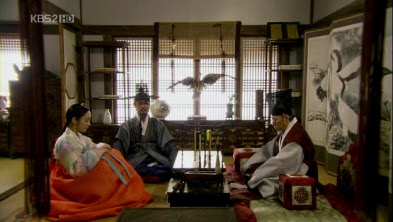
Chunggin
at home (The Talking Cupboard, 2012)
The next level down was occupied by the
sangmin (common people) who worked as: craftsmen, farmers, fishermen, laborers,
merchants, and peasants (tenant farmers) among other occupations and comprised
approximately 75% of the population During the Joseon Dynasty, though they did
not have family names. They were subject to military draft and often endured
heavy taxes, (often as much as 50% of their income) causing many to be poor
financially and making it very difficult for them to rise in society through
education. They were seen as “clean” by the upper classes.
Sangmin
craftsman (The Independent, 2011)
The bottom level was occupied by the cheomin
(low born/despised people) who worked as: acrobats, actors, Buddhist
monks/nuns, butchers, concubines, executioners, exorcists, gisaeng, (female
entertainers who were trained in dance, poetry, and singing) grave diggers,
hunters, jail keepers, magicians, metalworkers, mudang, (shamans) nobi,
(slaves) professional mourners, servants, shoemakers, and tanners among other
occupations, as well as beggars, and nomads were not allowed to live inside
towns, or take examinations to improve their status, and did not have family
names. Many nobi were people who were being punished for crimes, or not paying depts.,
but some people became slaves voluntarily in order to escape poverty, and still
others were part of slave families which had been owned the upper classes for
generations. Many of these generational
nobi went out into the mountains and formed bandit groups. This group was
considered “unclean” and often discriminated against by the upper classes. They
were exempted from military service, and taxes.

A
cheomin butcher (The Talking Cupboard, 2012)
A
cheomin nobi (slave) (note the identifying tattoo on the right cheek) (The
Talking Cupboard, 2012)
